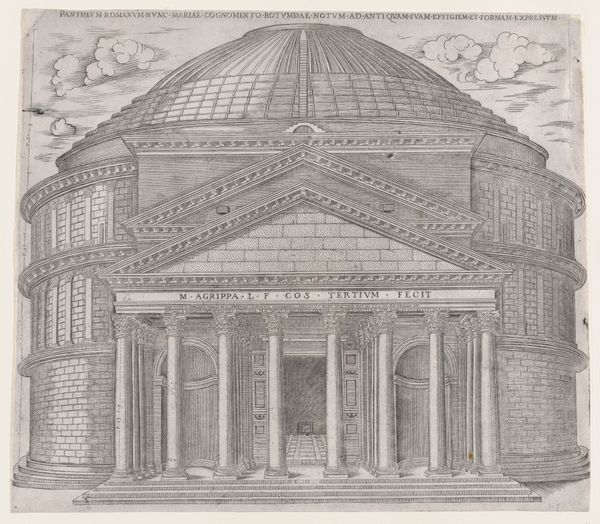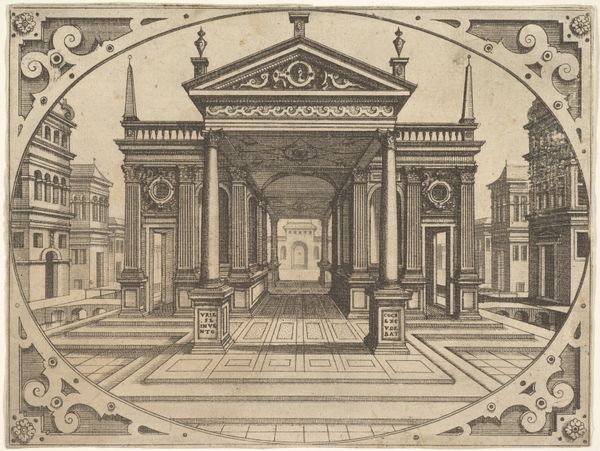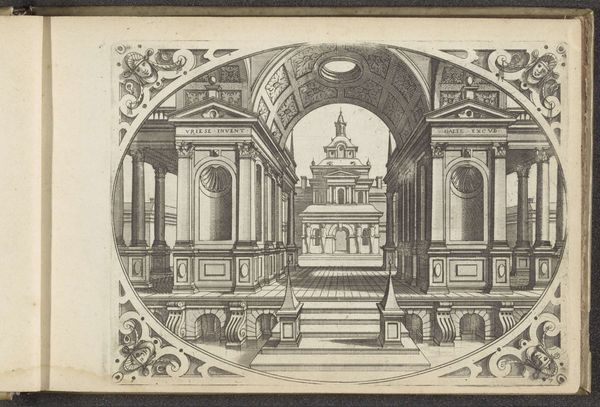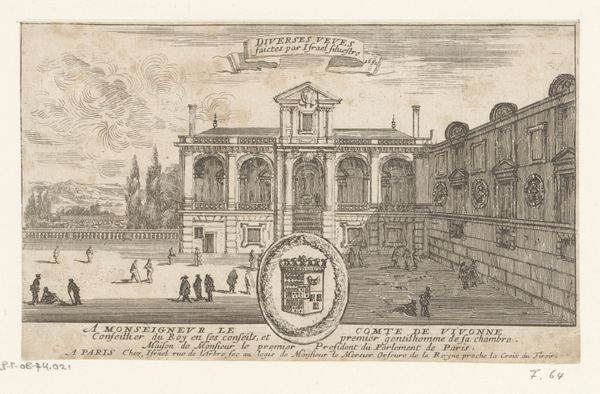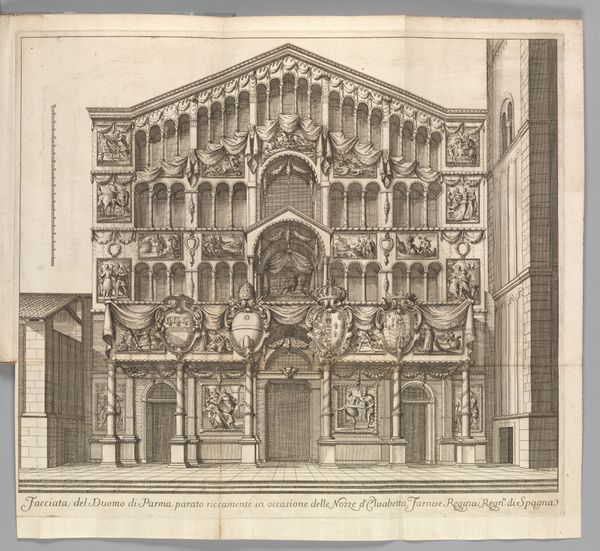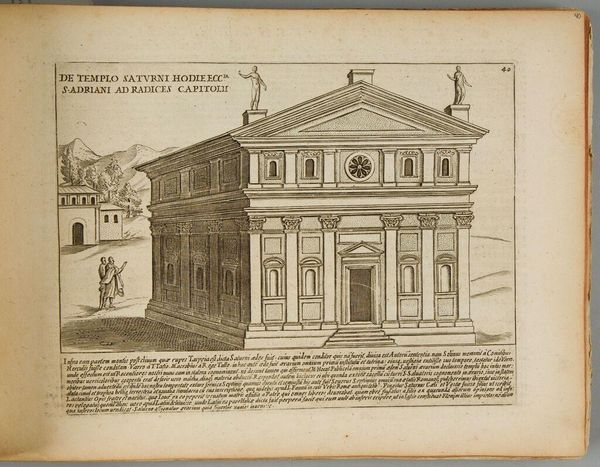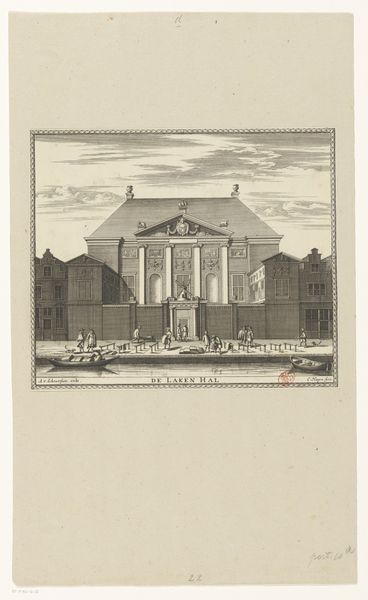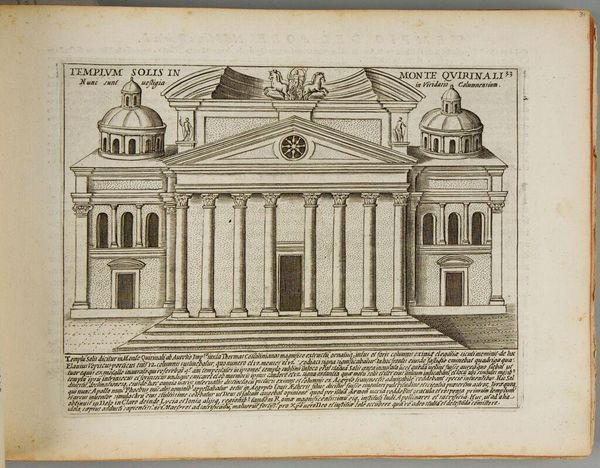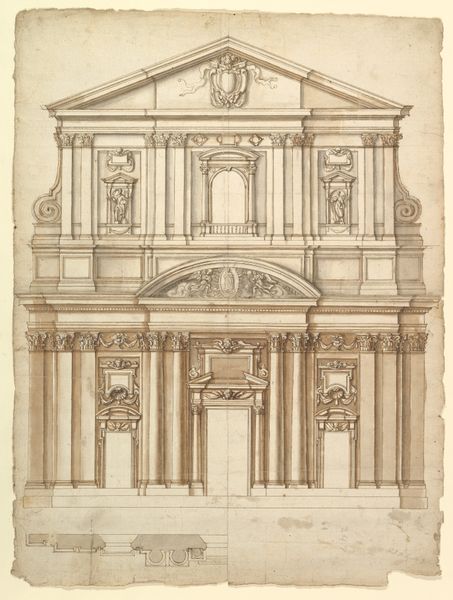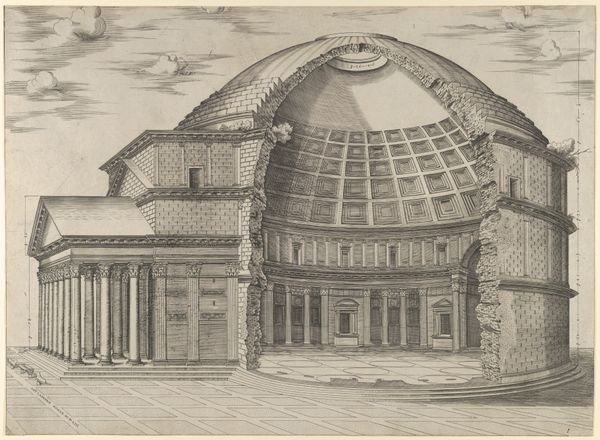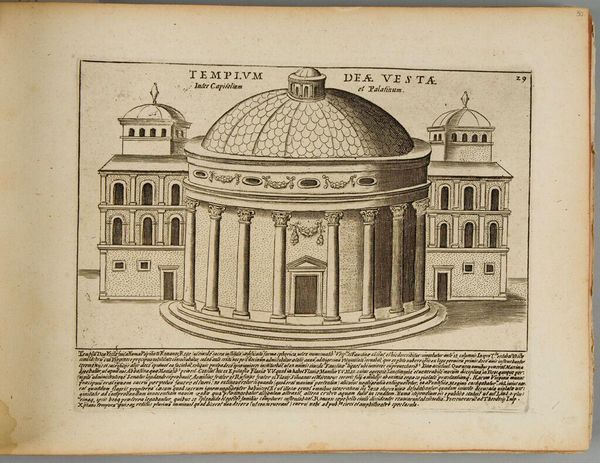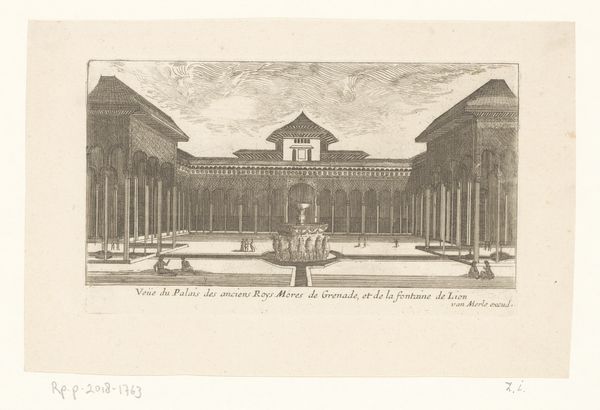
Speculum Romanae Magnificentiae: The Pantheon 1649
0:00
0:00
drawing, print, engraving, architecture
#
drawing
# print
#
perspective
#
11_renaissance
#
engraving
#
architecture
Dimensions: Plate: 18 3/16 x 18 5/16 in. (46.2 x 46.5 cm) Sheet: 15 7/16 x 17 3/16 in. (39.2 x 43.6 cm)
Copyright: Public Domain
Nicolas Beatrizet produced this engraving of the Pantheon as part of his *Speculum Romanae Magnificentiae*, or Mirror of Roman Magnificence. The series was printed in Rome from the 1540s onward. Beatrizet's print speaks to the ways in which the Pantheon has been transformed and interpreted over time. Originally a Roman temple, by the Renaissance it had become a Christian church, Santa Maria Rotonda. The inscription on the print tells us as much. Beatrizet presents a vision of the building that's both faithful to its antique form, yet relevant to the present. Prints like these met a growing demand for images of Roman monuments. They served not only as records but as models for architects and artists seeking to revive classical forms. Beatrizet's work highlights the institutional role of art in shaping cultural memory and influencing architectural practice. To understand this print better, we might look to architectural treatises, travel accounts, and collections of antiquities that shaped the Renaissance understanding of ancient Rome. These resources reveal how artists actively constructed the past to serve contemporary needs and aspirations.
Comments
No comments
Be the first to comment and join the conversation on the ultimate creative platform.

